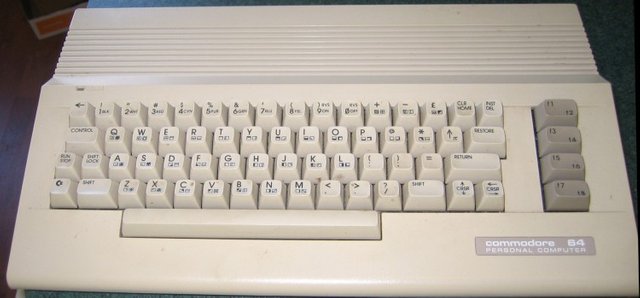
http://www.megalextoria.com/wordpress/index.php/2016/01/12/commodore-64-4/
The Commodore 64 has the distinction of being the best selling computer of all time. No other single model has come close. So what made the Commodore 64 so special?
The Commodore 64 was not Commodore's first computer. They had had some success with both their PET line of business computers and the VIC-20. The VIC-20 had a reputation as a particularly good games machine even after the console market had tanked. The PET line were decent computers but a bit over engineered and expensive for the home market and they didn't have the graphics and sound capabilities of the VIC-20. The VIC-20 on the other hand was relatively inexpensive and had good graphics and sound capabilities but was crippled by a limited amount of stock RAM (only 5 Kb) and a 22-column display. The Commodore 64 in many ways was a combination of and improvement on both of these.
The Commodore 64 was introduced in 1982 at a price of $595. This did not include a disk drive, monitor or any other peripherals but was still an incredibly good price for the time. Like the PET and the VIC-20 the Commodore 64 had a 6502 based processor. In this case a 6510 which is basically a 6502 with a few additional features. Many other computers of the time were 6502 based, including the Apple II and Atari 8-bit line. What made the Commodore 64 hardware special was the custom sound and graphics chips. Commodore was also able to beat everybody on price because the were vertically integrated. They owned MOS, the makers of the important ICs inside the C-64.
The sound chip is the famous SID (short for the creatively named Sound Interface Device). It was really a musical instrument in its own right and is probably the most famous sound chip ever made. In addition to the obvious game music and sound effects, some musicians even to this day still make use of the SID. It was also arguably responsible for the creation of the demo scene.
Features of the SID include (taken from Wikipedia):
- three separately programmable independent audio oscillators (8 octave range, approximately 16 - 4000 Hz)
- four different waveforms per audio oscillator (sawtooth, triangle, pulse, noise)
- one multi mode filter featuring low-pass, high-pass and band-pass outputs with 6 dB/oct (bandpass) or 12 dB/octave (lowpass/highpass) rolloff. The different filter modes are sometimes combined to produce additional timbres, e.g. a notch-reject filter.
- three attack/decay/sustain/release (ADSR) volume controls, one for each audio oscillator.
- three ring modulators.
- oscillator sync for each audio oscillator.
- two 8-bit A/D converters
- external audio input
- random number generator
The other chip that made the Commodore 64 special was the VIC-II graphics chip. It was the successor to the original VIC that was used in the VIC-20. The VIC-II was responsible for the arcade like graphics available on the Commodore 64 and what made it a great machine for gaming. In addition to being a computer, the Commodore 64 was THE gaming machine to have in the early 1980s and beyond.
Features of the VIC-II include (taken from Wikipedia):
- 16 kB address space for screen, character and sprite memory
- 320 × 200 pixels video resolution (160 × 200 in multi-color mode)
- 40 × 25 characters text resolution
- Three character display modes and two bitmap modes
- 16 colors
- Concurrent handling of 8 sprites per scanline, each up to 24 × 21 pixels (12 × 21 multicolor)
- Raster interrupt
- Smooth scrolling
- Independent dynamic RAM refresh
- Bus mastering for a 6502-style system bus; CPU and VIC-II accessing the bus during alternating half-clock cycles
The Commodore 64 also featured 64 KB of RAM. These stats may not sound all that impressive by today's standards but for the time it was very impressive. Thousands of games and other applications were released for the Commodore 64 and a thriving demo scene was born with the Commodore 64 that continues today.
I didn't get my Commodore 64 (which was the 64C...same thing with an updated exterior) until Christmas of 1987. It would be 1988 before i had a disk drive (a 1541-II) and Christmas of 1988 before I had a monitor (before that I used a small color TV). I think in 1989 I got a dot matrix printer and a modem. I wouldn't upgrade until I got my 486 DX2-66 right before going to college in 1993 but while that 486 is long gone I still have my Commodore 64.
Read more: http://www.megalextoria.com/wordpress/index.php/2016/01/12/commodore-64-4/

Classic style alwaya liked by the people.
I think this is the best way save some bucks.
Peripherala are incredible affordable.
Downvoting a post can decrease pending rewards and make it less visible. Common reasons:
Submit